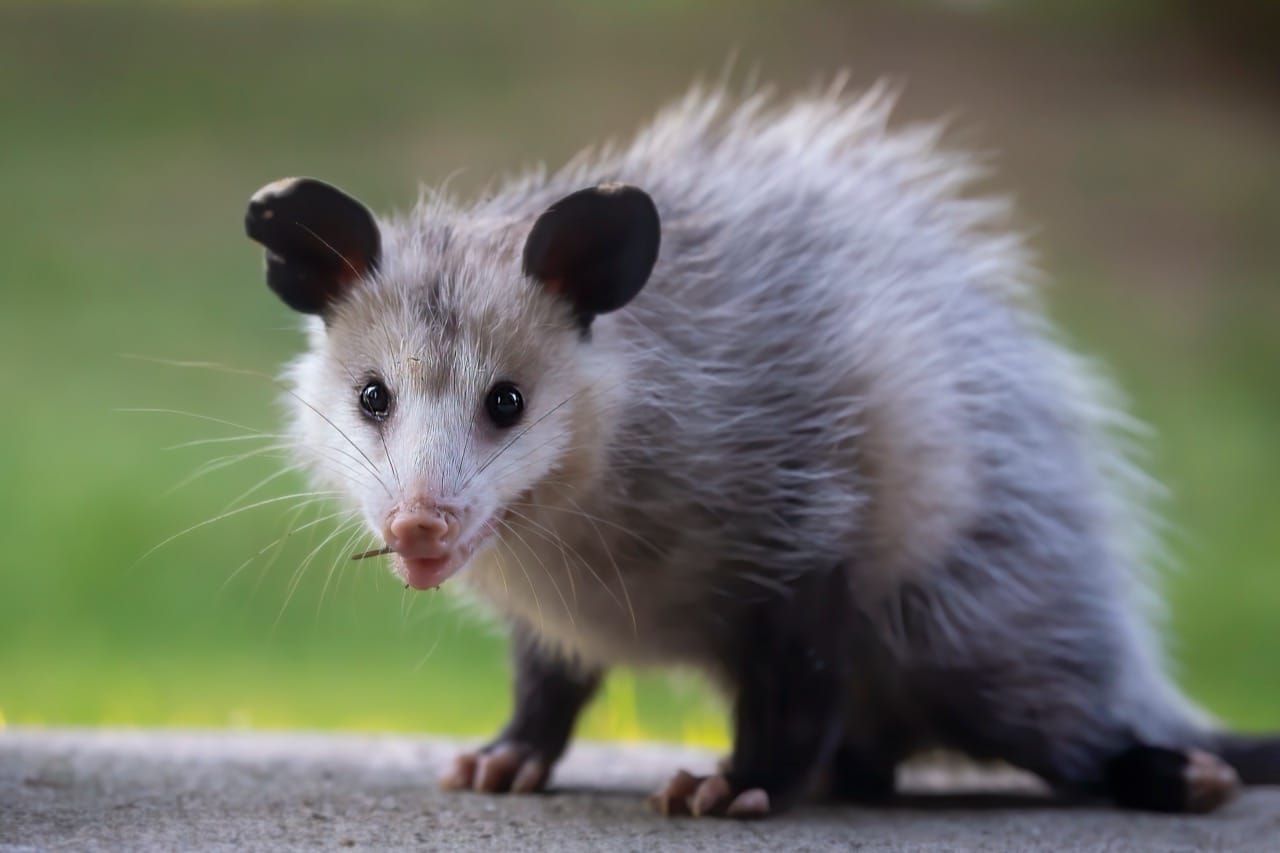The opossum, often seen as a mere backyard visitor or a road-crossing silhouette, holds a title as North America’s sole native marsupial. This creature’s survival story is a testament to its adaptability and resilience, making it a fascinating subject of ecological and evolutionary studies.
Characteristics / Physical Description
The opossum, specifically the Virginia opossum (Didelphis virginiana), is easily recognized by its grayish fur, white face, and long, hairless tail. Adults can vary significantly in size, typically weighing between 4 and 14 pounds, with a body length of about 2 to 3 feet. One of the most distinctive features of the opossum is its prehensile tail, which serves as an extra limb for grasping branches and stabilizing their body during climbing.
Taxonomy and Classification
Didelphis virginiana belongs to the order Didelphimorphia, which is a group of marsupials native to the Americas. This species is part of the family Didelphidae, which encompasses a variety of opossum species spread across North and South America.
Behavior and Social Structure
Opossums are solitary and nomadic creatures, often moving from one area to another in search of food. They are nocturnal, preferring to forage during the night. When threatened, an opossum might “play dead,” an involuntary response that can deter predators.
Habitat and Distribution
Virginia opossums are highly adaptable and can thrive in a diverse range of environments including forests, open fields, and urban areas. They are prevalent across the United States, from the east coast to the Rocky Mountains, and their range has been expanding northward into Canada due to climate change.
Diet and Feeding Habits
Opossums are opportunistic omnivores. Their diet includes fruits, grains, insects, small animals, and even carrion. Remarkably, they are nearly immune to rabies and can consume other animals that might be carriers of the disease without contracting it themselves.
Breeding and Reproduction
Opossums have a remarkable reproductive system. Females can give birth to up to 20 young after just 12 days of gestation. The newborns, which are tiny and underdeveloped, must make their way to the mother’s pouch where they continue to develop securely attached to a teat.
Relationship with Humans
While often considered pests, opossums can be beneficial to humans by controlling unwanted pests like ticks and small rodents. They are generally non-aggressive and tend to avoid human interactions, making them relatively harmless visitors.
Evolutionary History
The lineage of opossums dates back to the extinction of the dinosaurs, making them one of the oldest surviving families of mammals. Their presence in both North and South America provides valuable insights into the evolutionary history and biogeographical shifts of marsupials.
Use as Research Animals
Due to their unique immune system and reproductive traits, opossums have become subjects in scientific research, particularly in studies related to immunity and embryonic development.
Opossums, with their prehistoric origins and contemporary adaptability, exemplify nature’s resilience. Understanding and appreciating the role of this often overlooked marsupial can enhance our efforts in wildlife conservation and ecological management.

